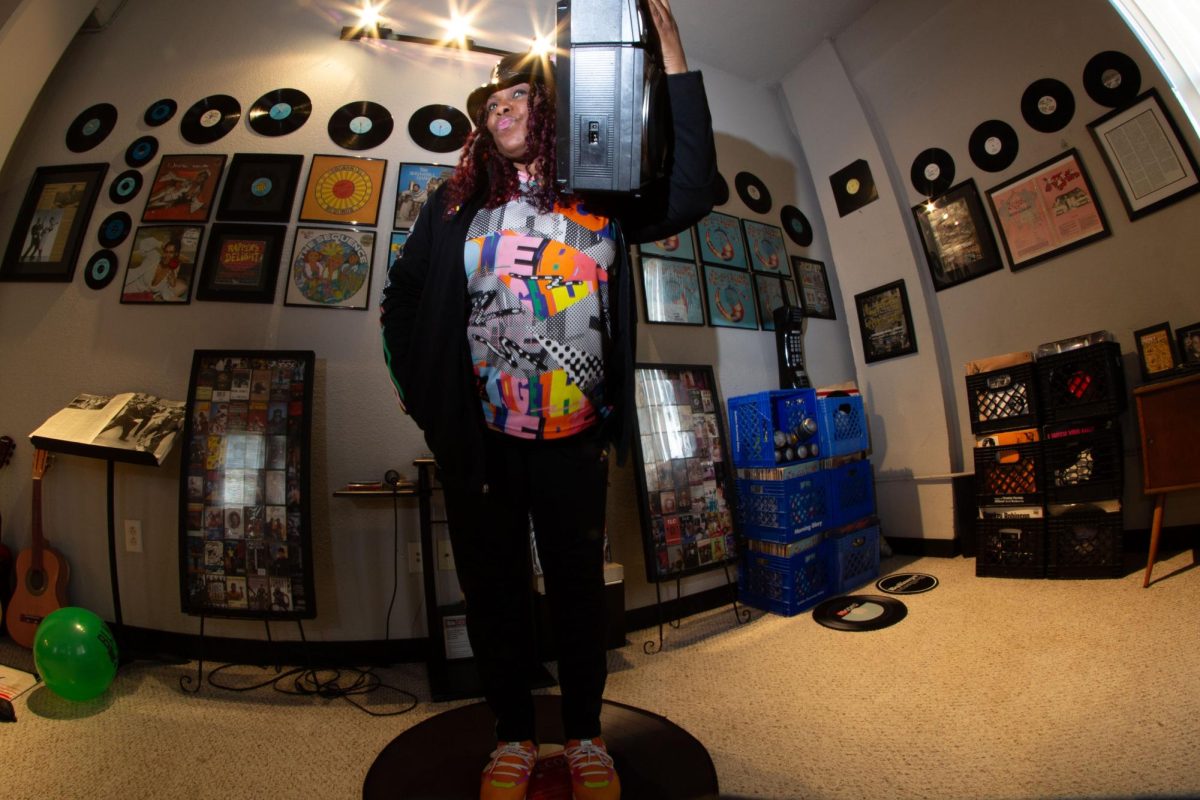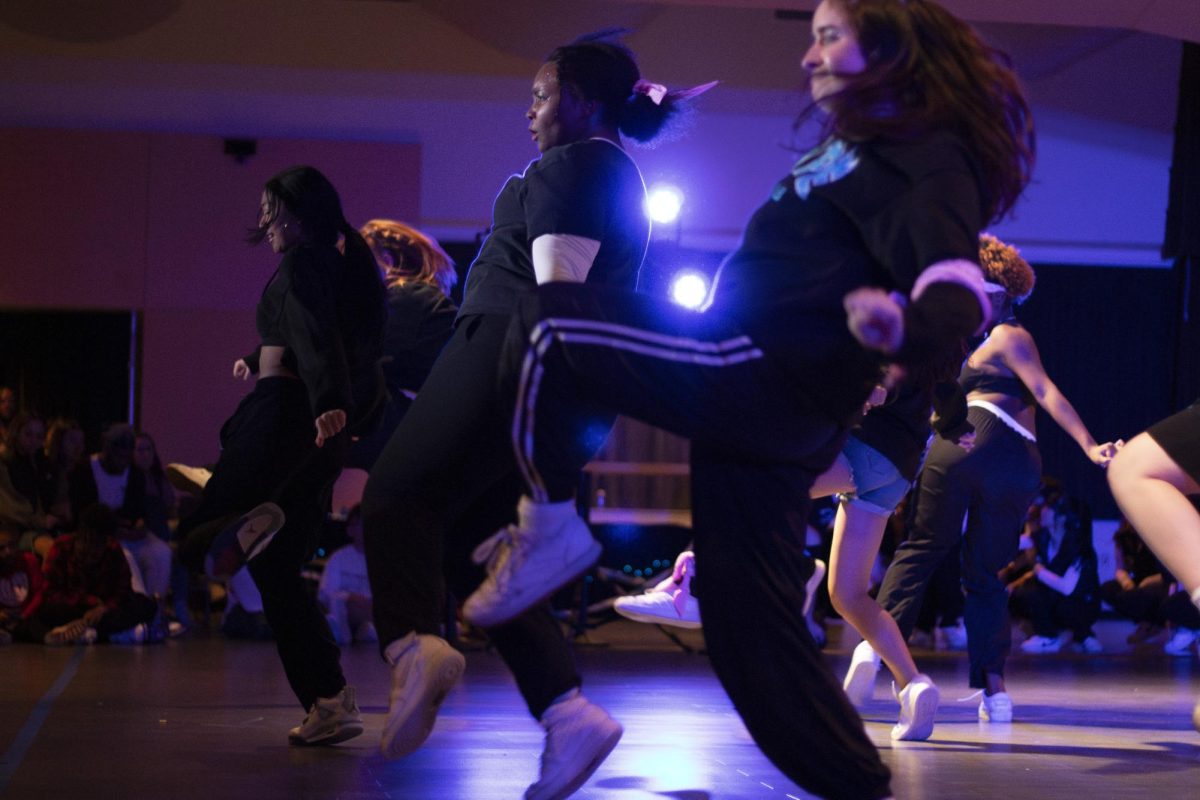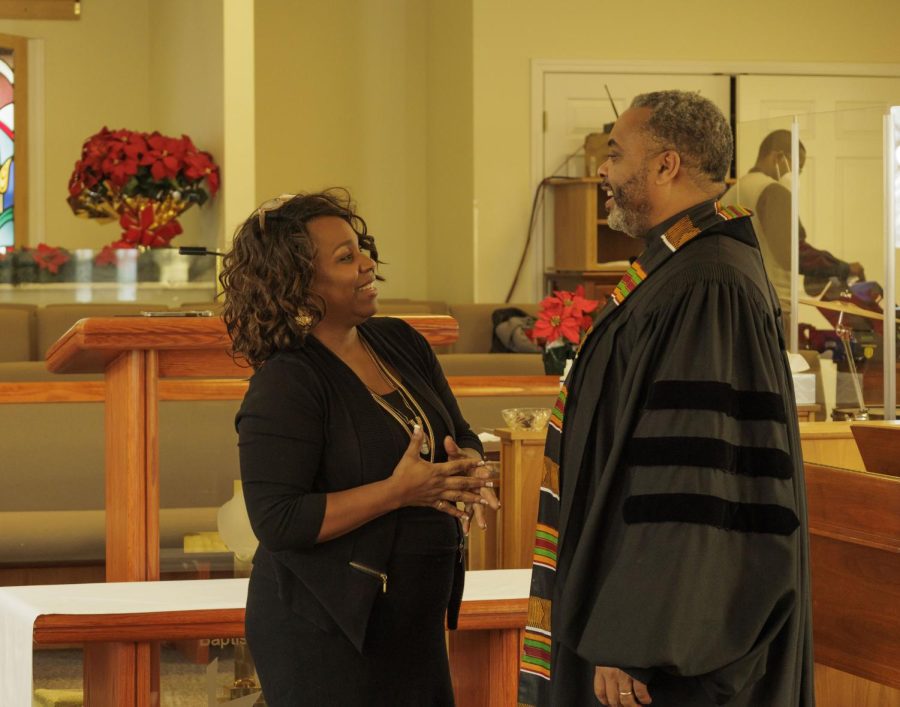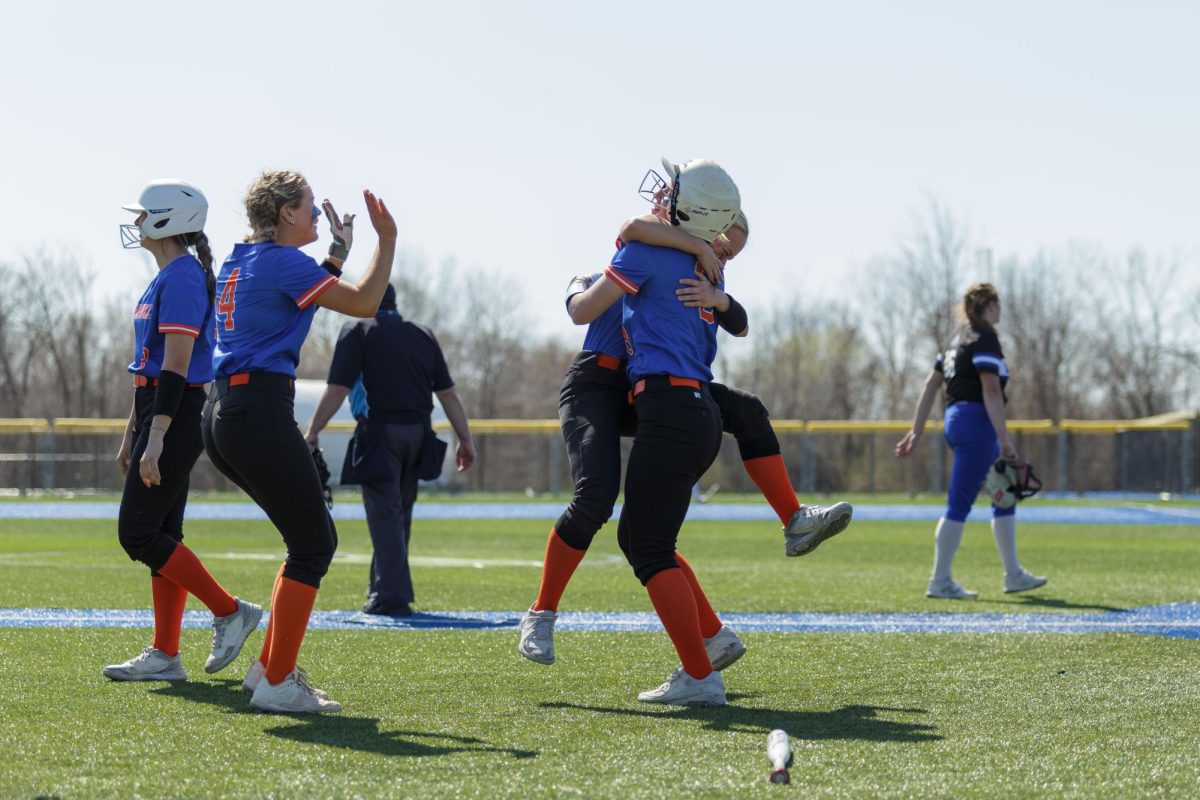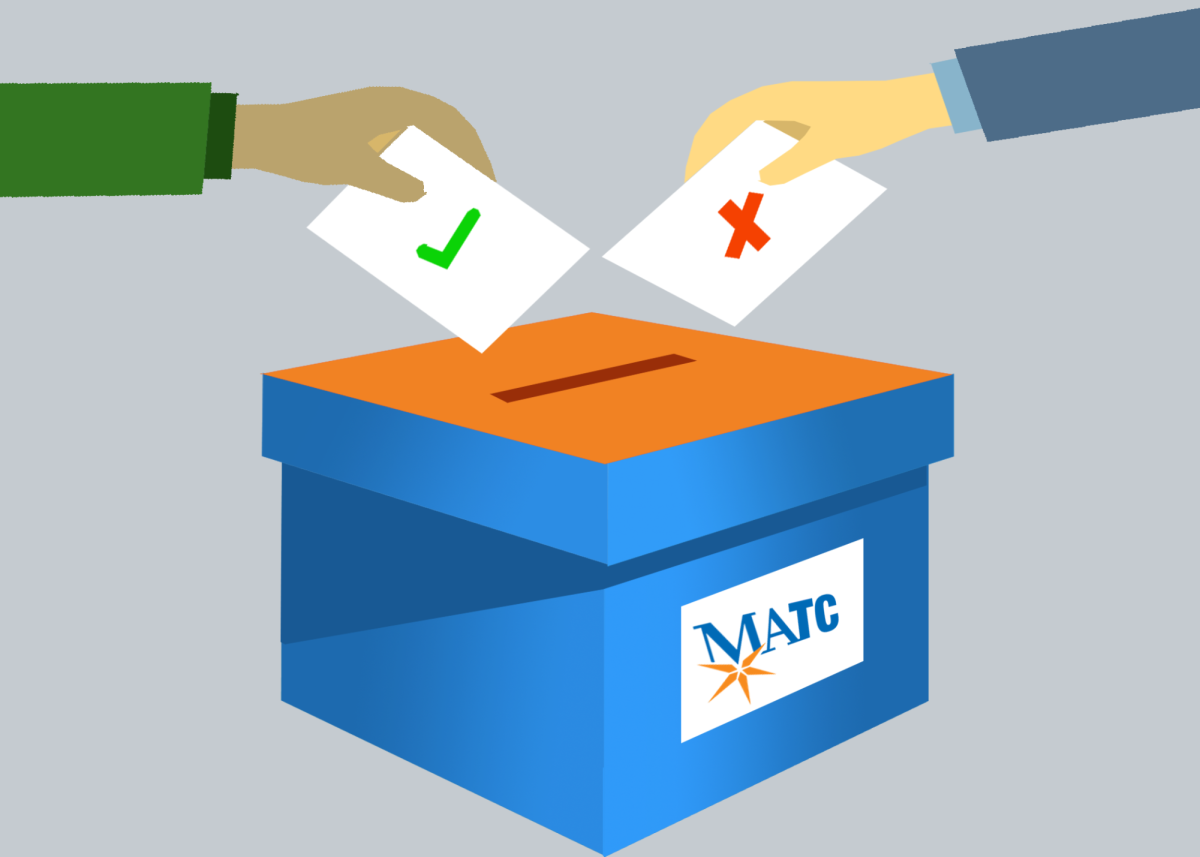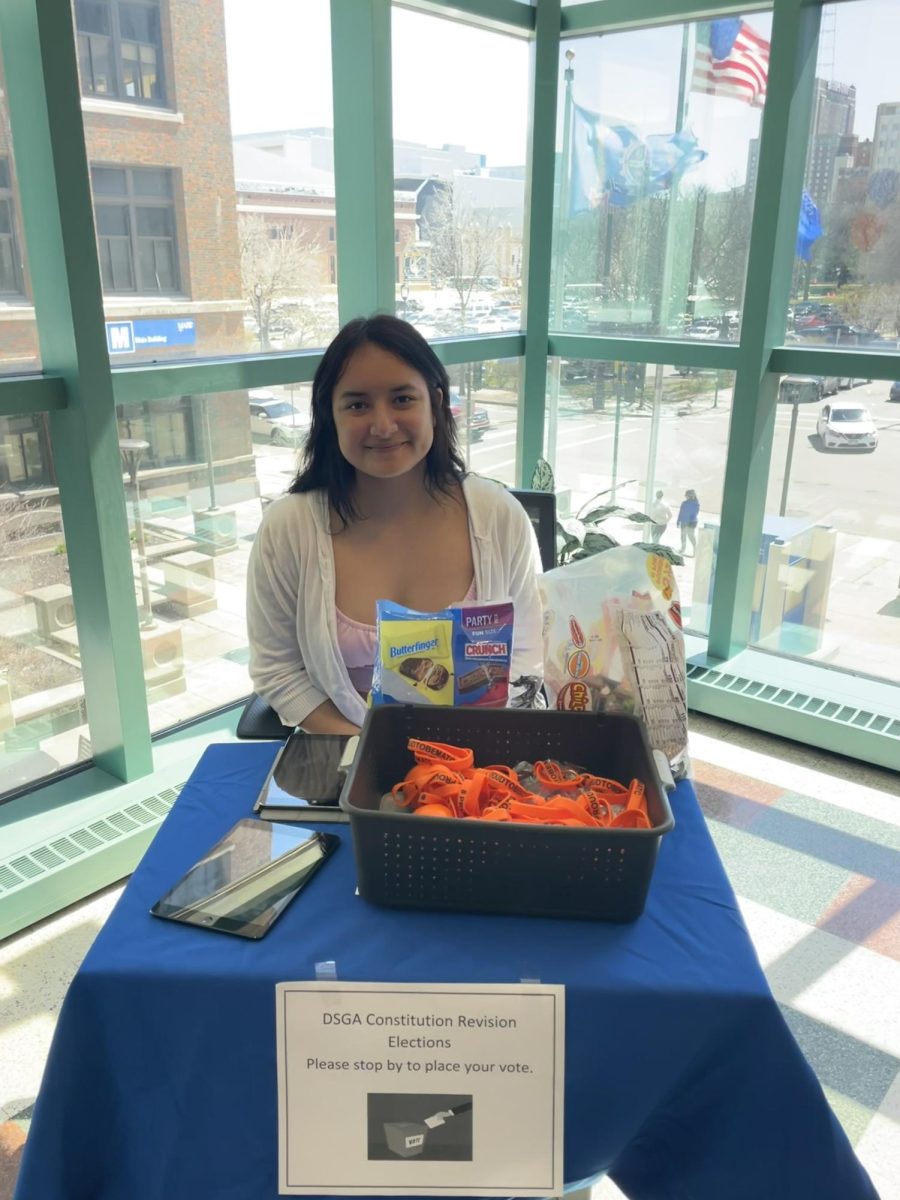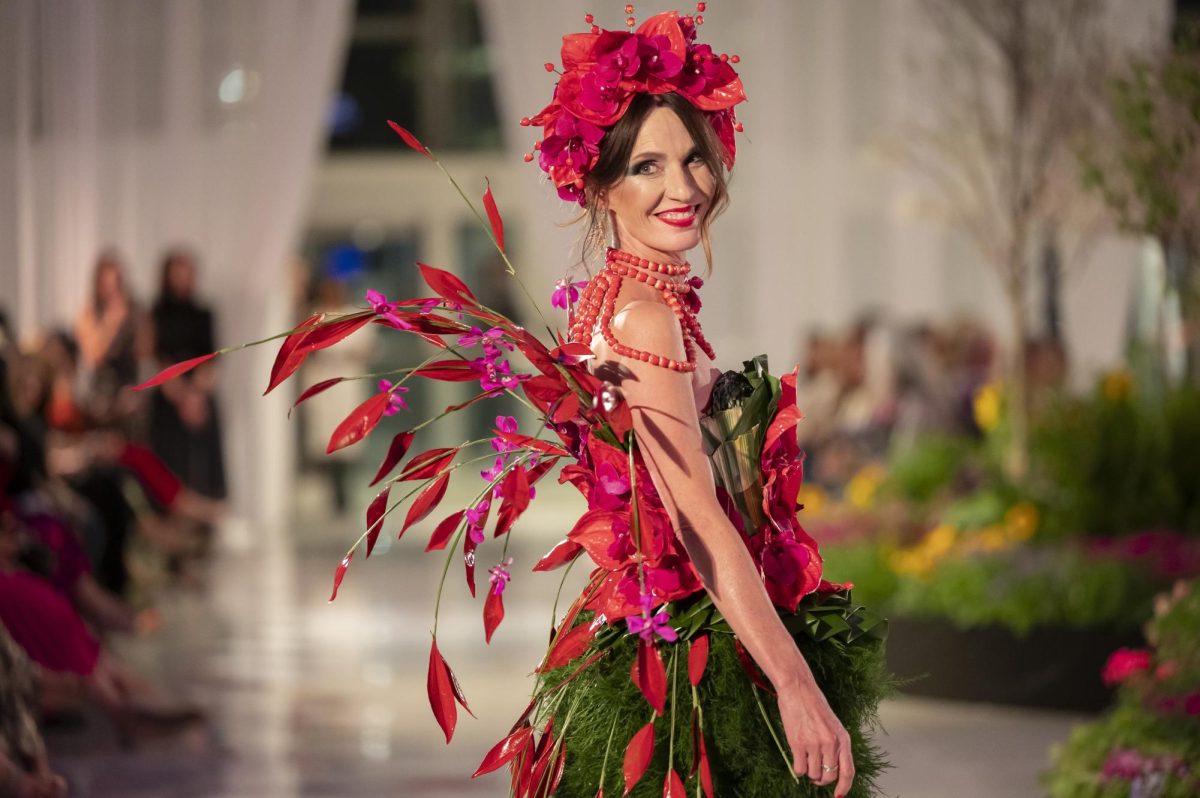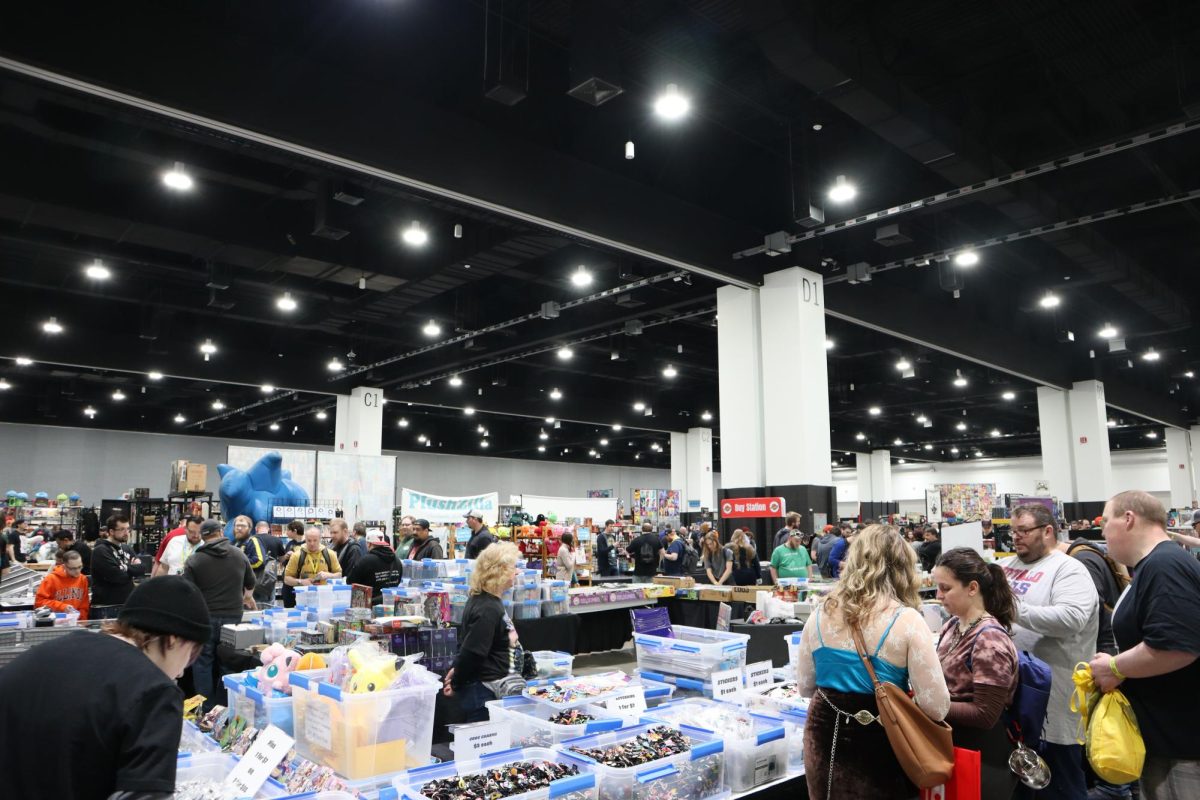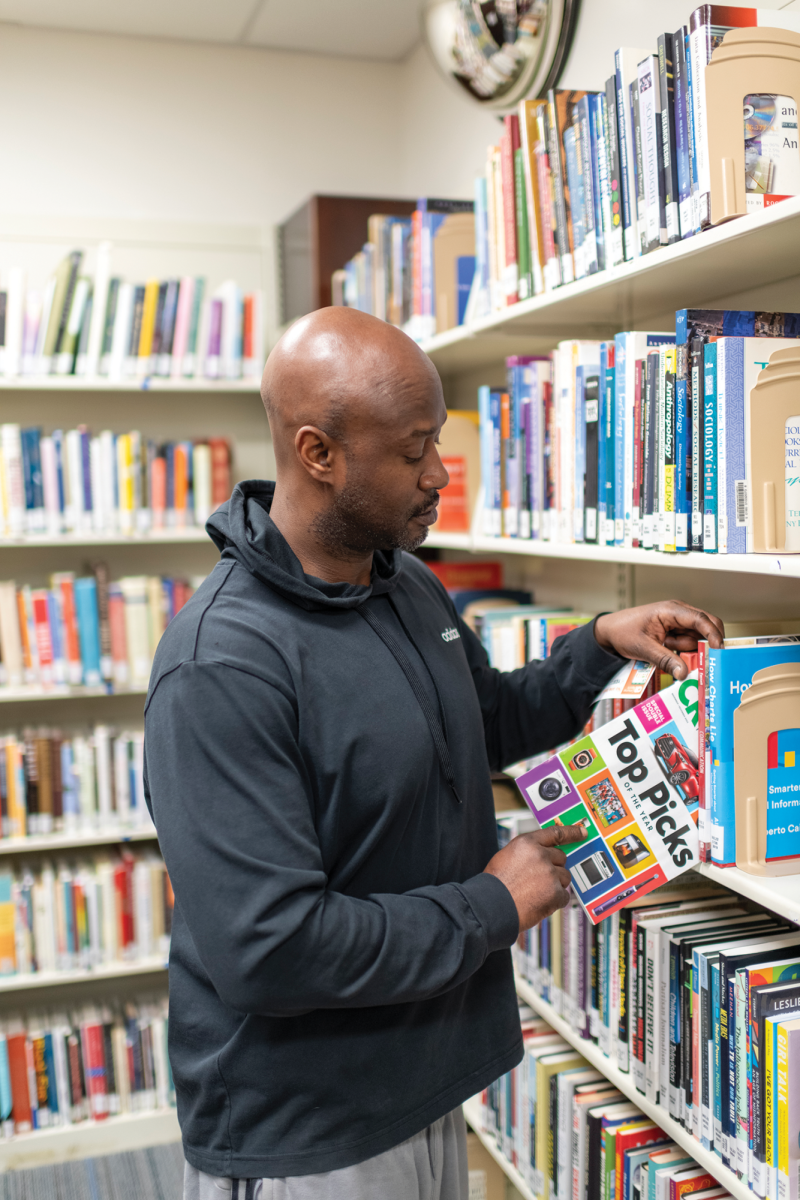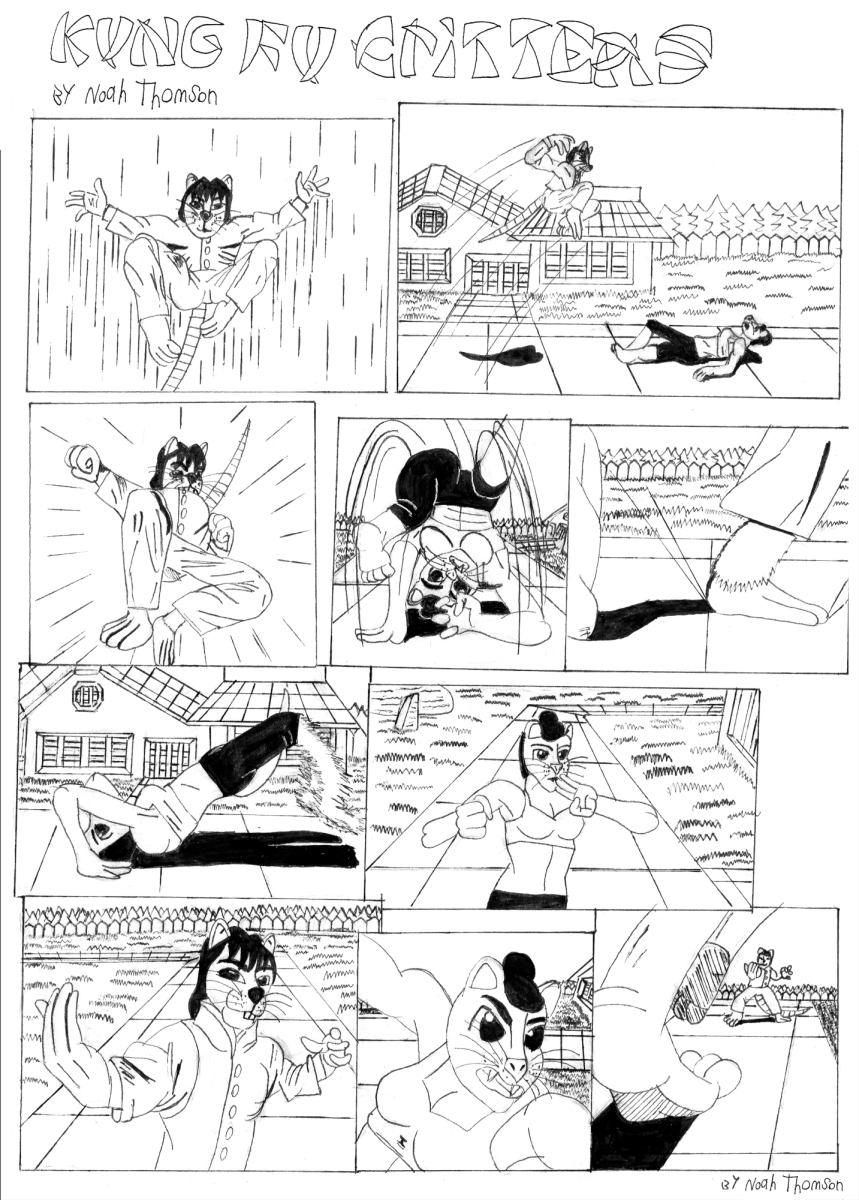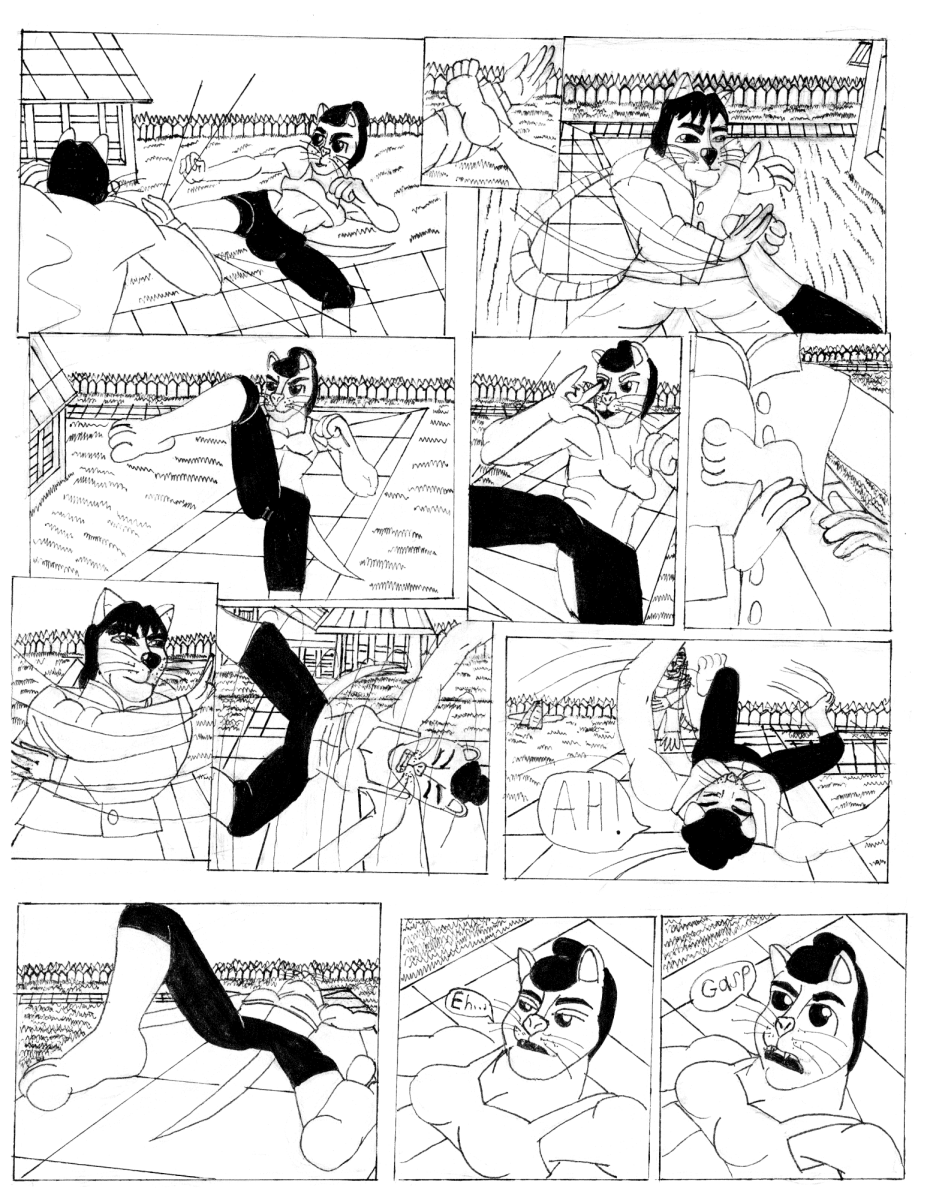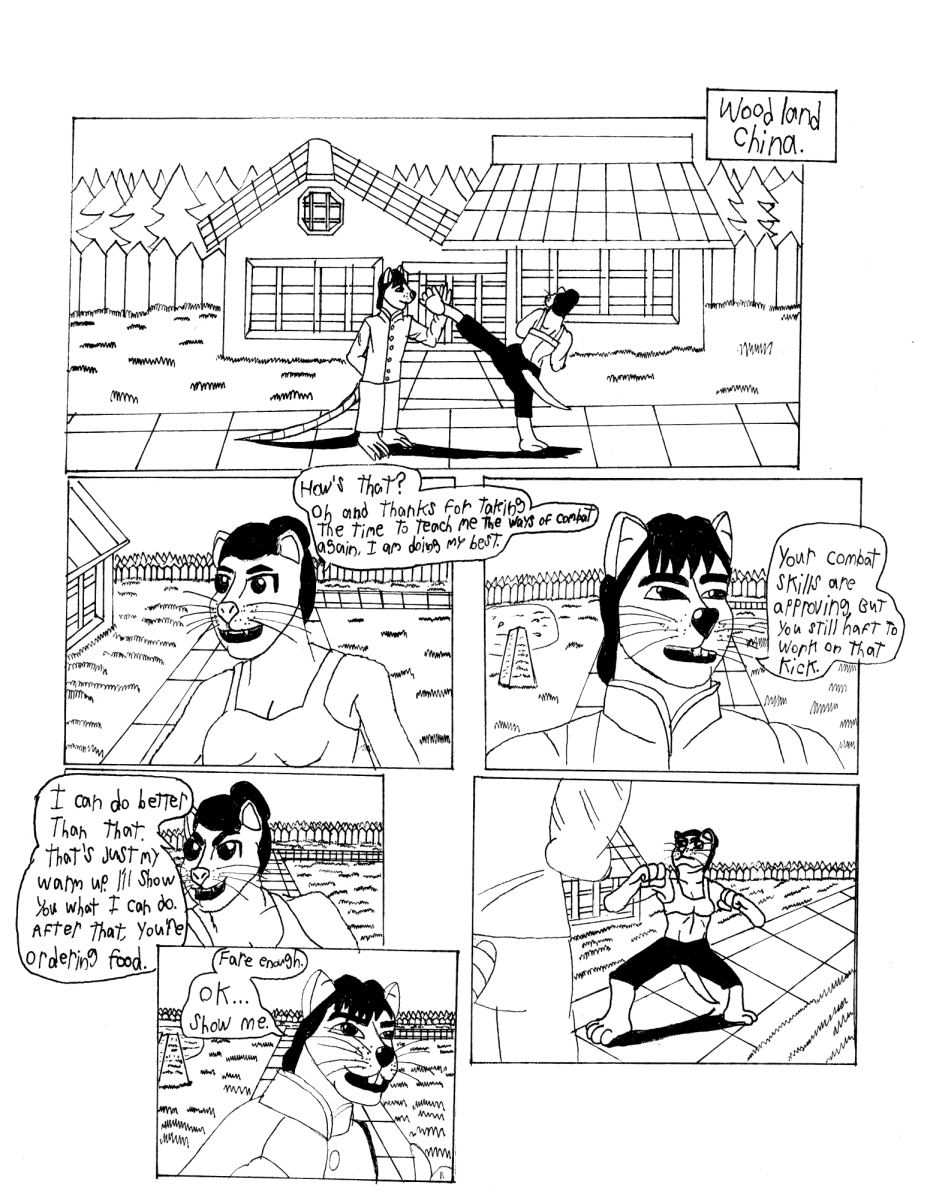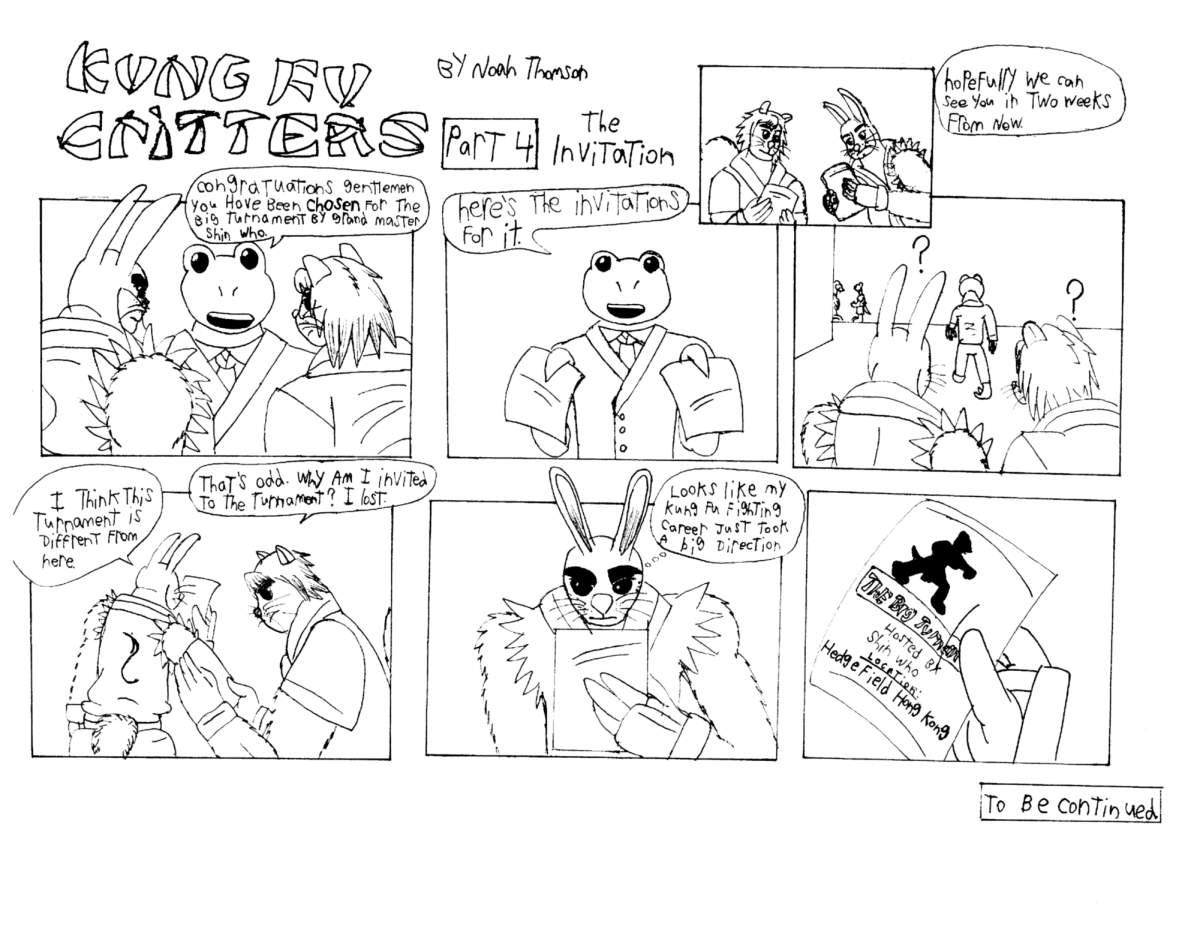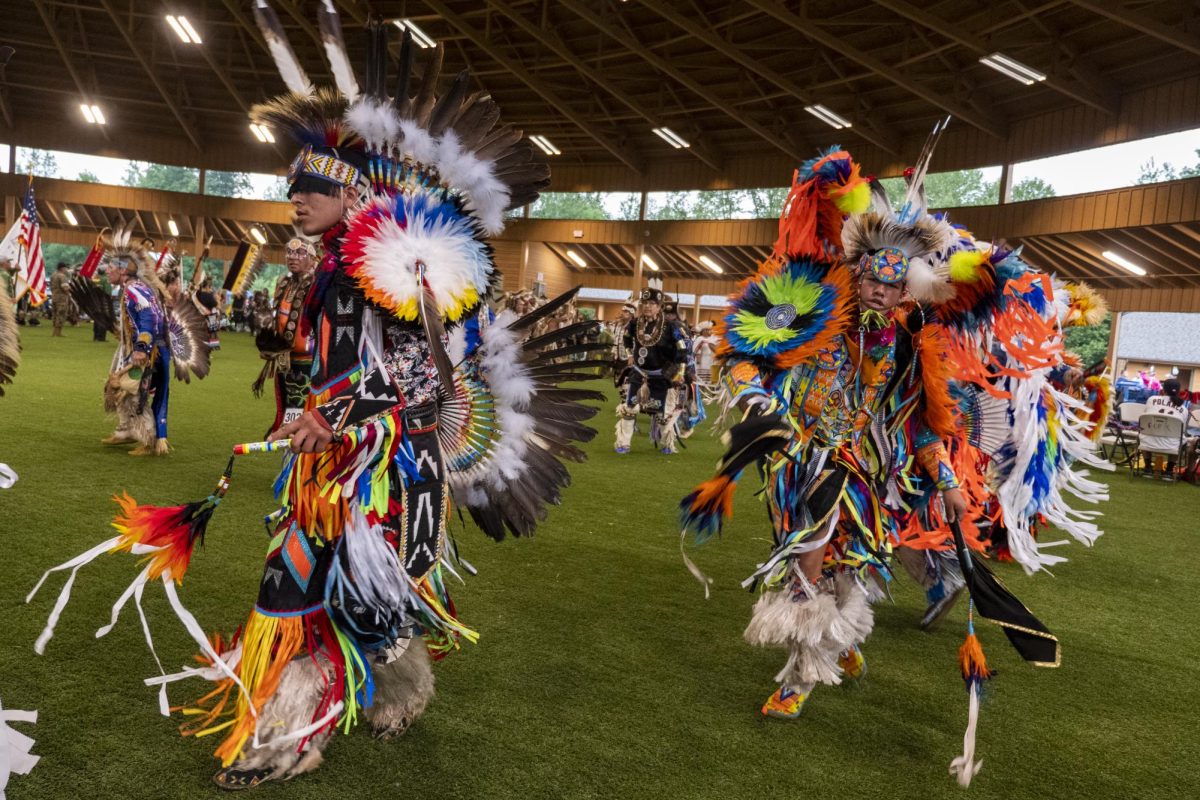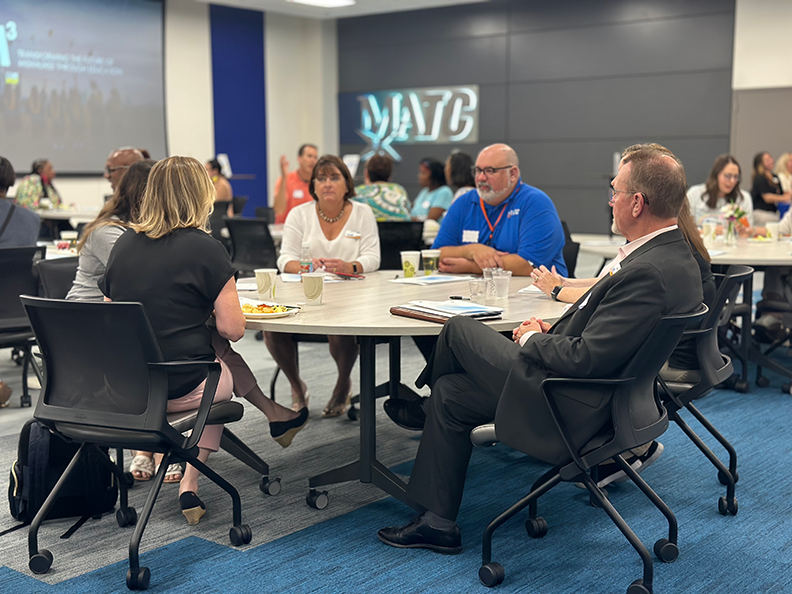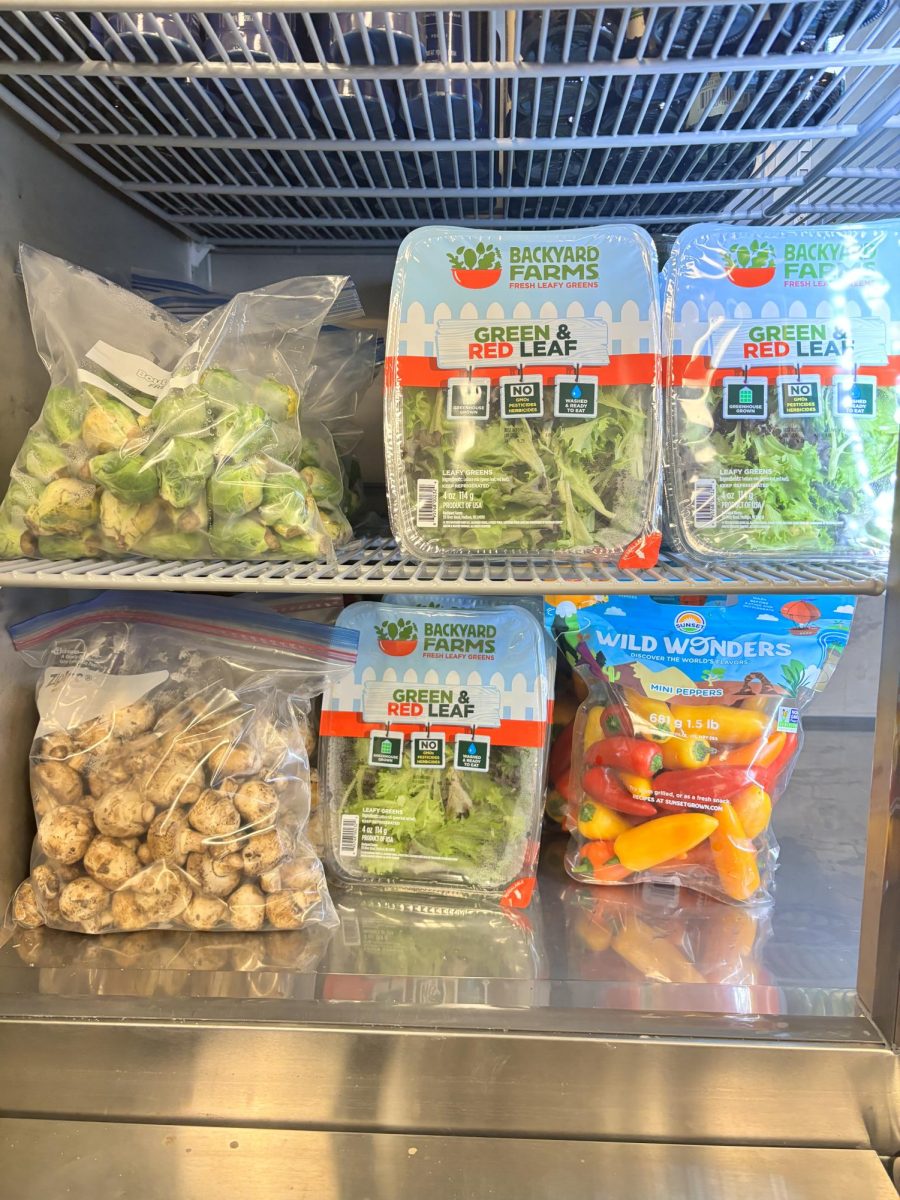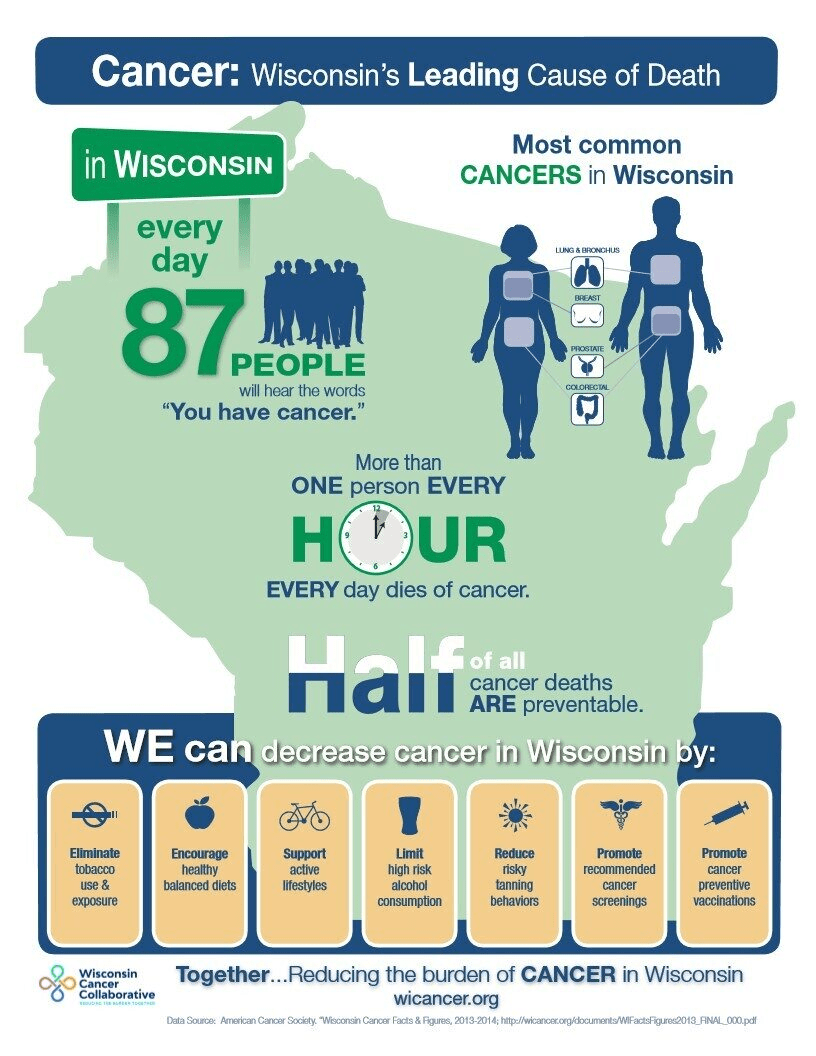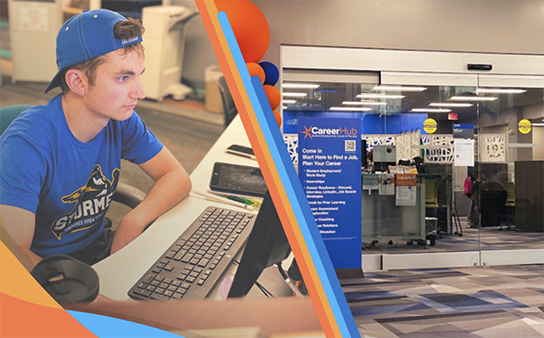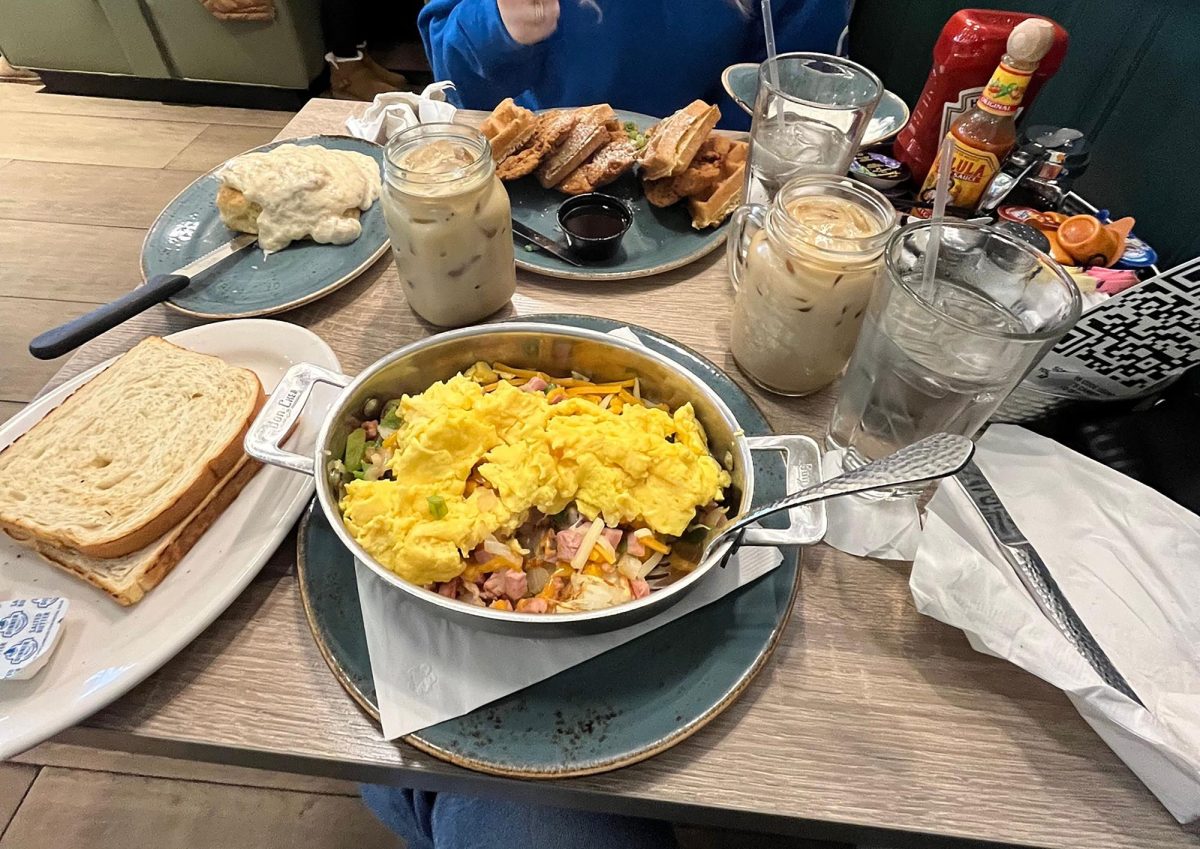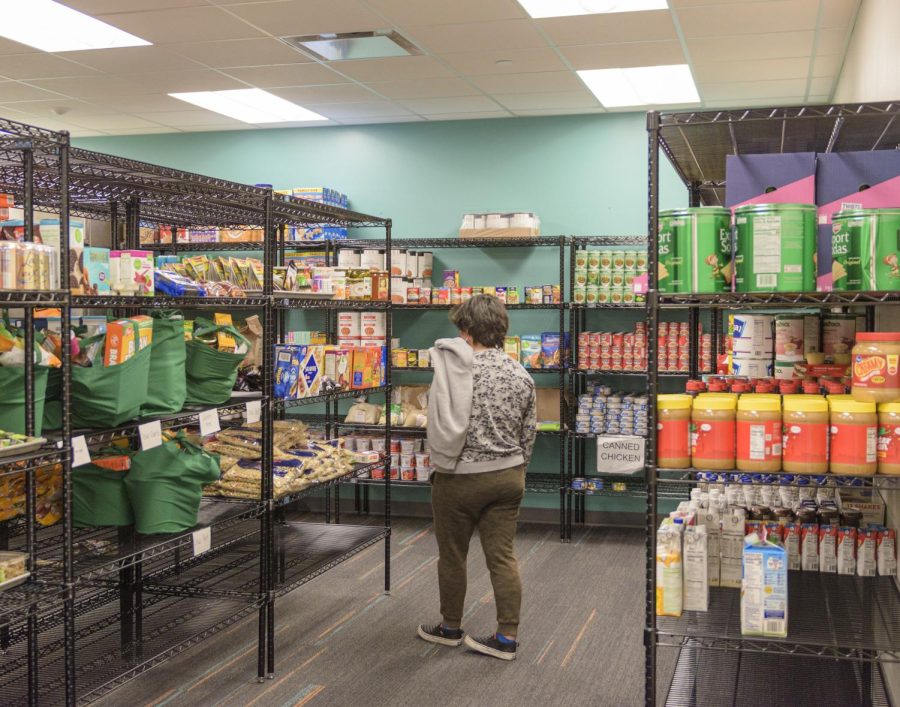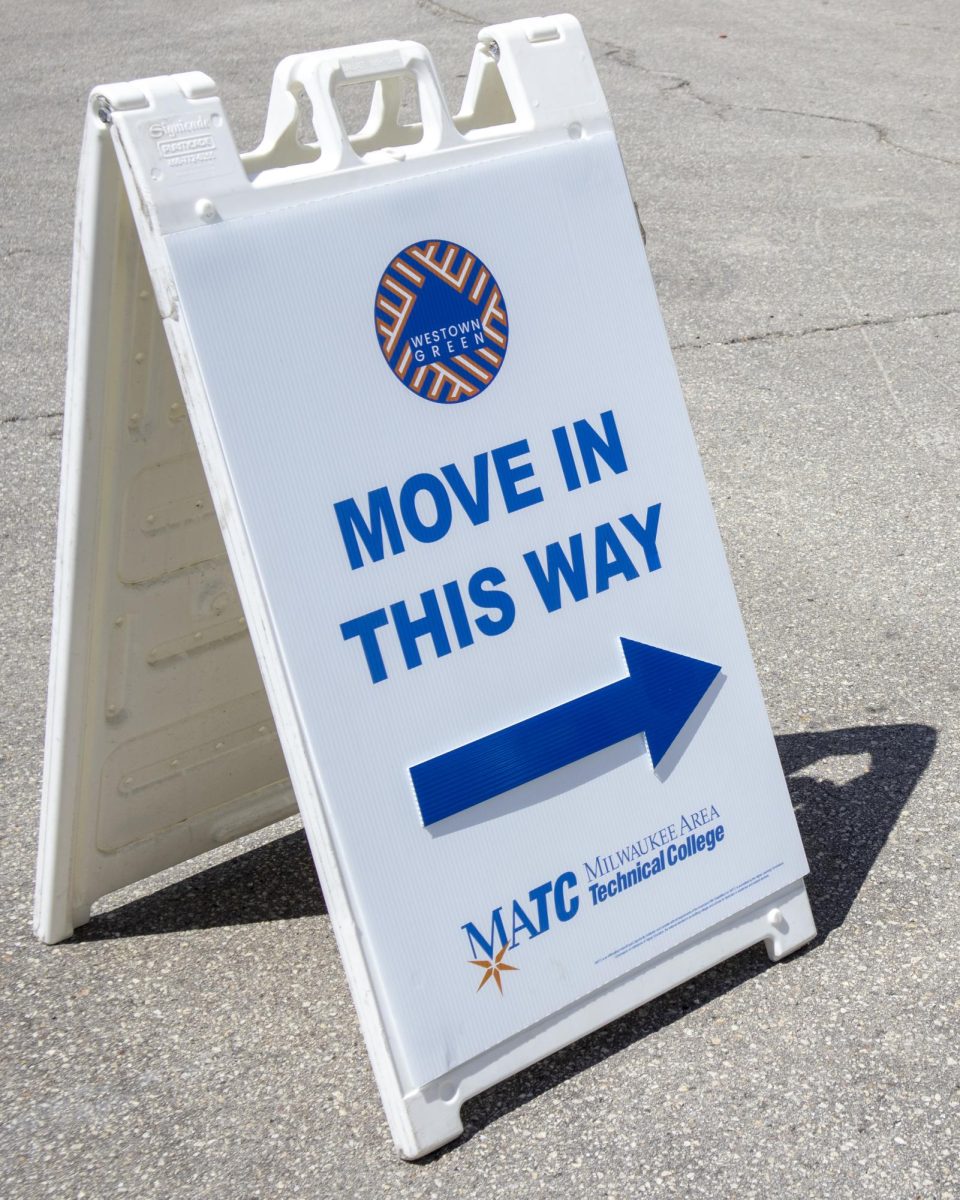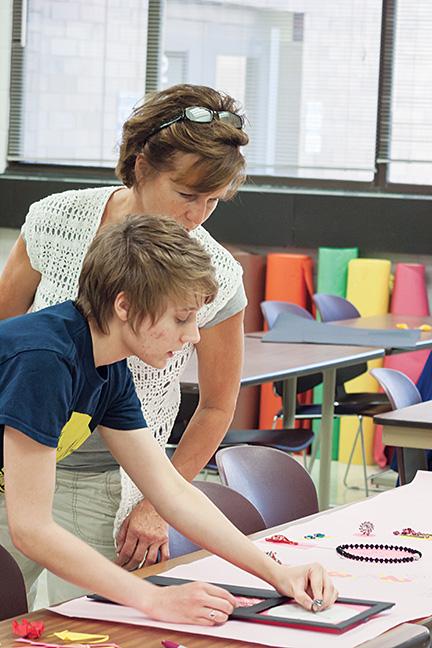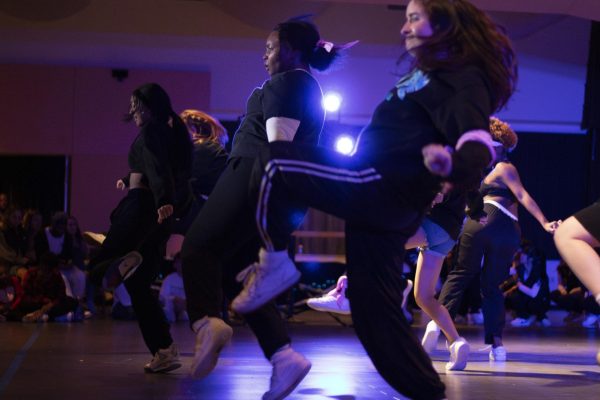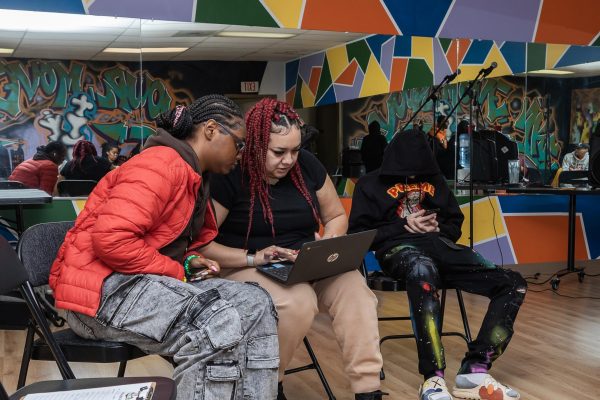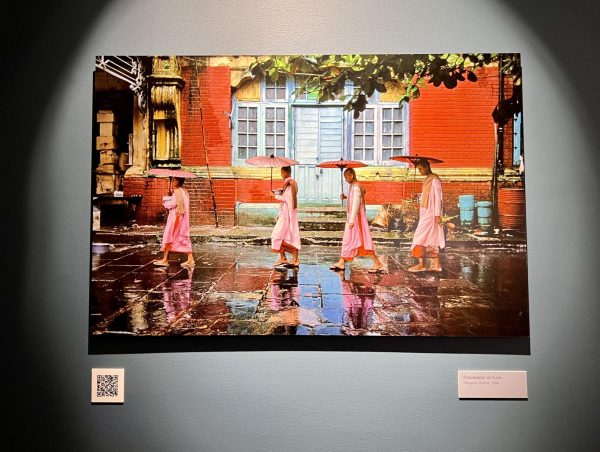Fashion/Retail students succeed with style
Photo by Michelle Ferrell
Education Assistant Nancy Crosby discusses a display project with a student.
It’s not often thought that technical colleges offer courses related to the fashion industry, but with the Fashion and Retail Marketing associate degree program offered at its Oak Creek campus, MATC does just that. In the words of long-time instructor and program coordinator Deborah Jansky, the program “ensures students are well-equipped to move up in retail positions.” According to Jansky, between the hands-on experience and academic work required of program students, “they come out as very strong employees for the retail industry.”
Though timelines will vary based on the course load that each student is able to take on, the program’s requirements can generally be completed within a four-semester timeline. During their first semester, students are taught basic principles of marketing, selling, management, and other skills required to succeed in their chosen fields once they graduate. Students then go on to learn about different elements of fashion and retail, such as textiles and customer service from a more in-depth approach. Finally, all program students must complete two internships, amounting to one full year of field experience.
The history of the Fashion and Retail Marketing program began in the late 1970s, at a time when the “dress for success” marketing initiative was aimed at enabling women in the workforce.
With courses like Financial Accounting, Special Event Management, Communication Skills, Supervision, and Marketing Principles, the program provides a comprehensive understanding of the retail industry that Jansky believes sets students ahead of the competition.
Visual Merchandising instructor Gretchen Davidson says that, although “fashion” and “retail” bring to mind images of catwalks and stylish mannequins in store windows, the bottom line is that students learn about the business end of things. Davidson and Jansky agree that graduates of MATC’s Fashion/Retail Marketing program have a definite advantage. “The program gives them exposure to a lot of different skill sets than they would probably get in the first couple of jobs they might have in the industry,” Jansky said.
As a graduate of the program in its early years, Jansky attributes her success in the retail industry to the degree she obtained through MATC. “I loved it,” she said of the program. “From my schooling I went on to become a fashion coordinator at Gimbel’s. It definitely prepared me well.”
Years later in 1988, Jansky returned to MATC to begin her career as an instructor for the program. The reason, she explains, is her upstanding belief in the ability of the Fashion and Retail Marketing program to prepare students for their own success in the industry. “I love what I do, I love seeing people grow,” she shared. Jansky continued to explain that the most rewarding aspect of it for her is “seeing the growth of the students. A lot of them come in knowing nothing about the industry. It’s fun to watch them blossom.”
As the state’s largest city, and with both Kohl’s and Boston Store headquartered in the area, Milwaukee is poised as a mainstay of the industry in Wisconsin. Davidson says that, in terms of retail and management, “Milwaukee should be exploding with opportunities in the next five to 10 years.” Because it involves everything from product development to the actual sale of merchandise, with a range of products from clothing to furniture, Davidson says that retail is a more important industry than it is commonly given credit for being.
The Fashion and Retail Marketing program began as one of the first programs of its kind in the Milwaukee area, and MATC continues to support students’ academic success with articulation agreements with a selection of four-year colleges. Davidson believes that with the experience MATC provides them, “students can go farther, and faster” in this growing industry.

I look forward to using my position as an Editor for the Times to inspire students to become more aware and active participants in their own education....

